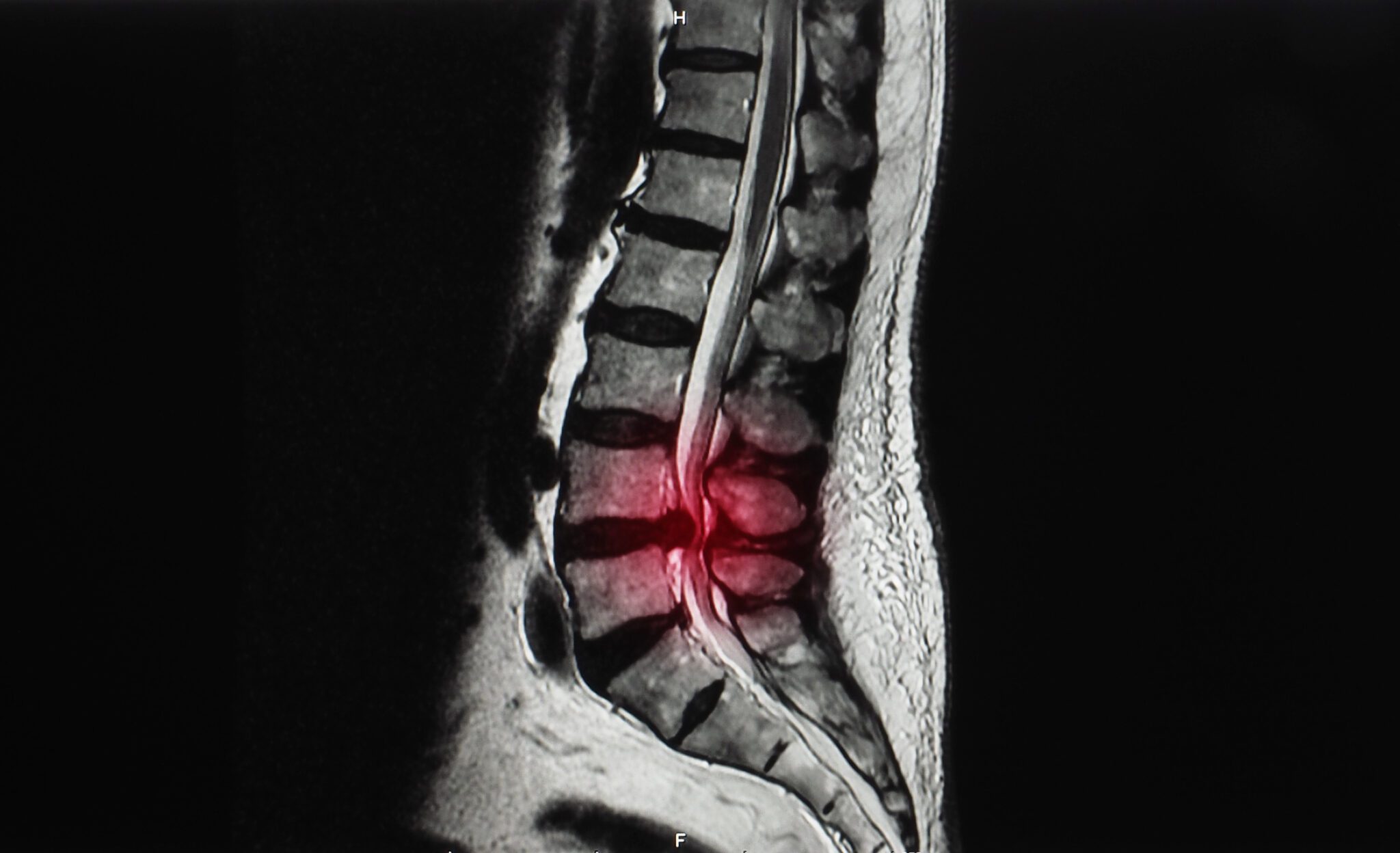Sciatica is a condition caused by the pinching of the sciatic nerve which causes pain starting in the lower back that radiates down the back of one leg. The two sciatic nerves are the longest in the human body and are formed by the combination of five nerve roots originating in the lumbosacral spine.
These nerve roots come together and run down each leg to the bottom of each foot. Sciatica can result from any kind of irritation along the nerve pathway causing pain to radiate down the legs and into the feet. There are multiple factors that can contribute to sciatica, but the vast majority of cases involve a disc herniation in the lumbar spine.
Lumbar spinal stenosis can also cause sciatica, which is the narrowing of the lumbar spinal canal causing compression of the nerve roots leading to sciatic nerve pain. Tumors can lead to compression of sciatic nerve roots but this is a much less common source of sciatica.
In the most common scenario, a disc herniates and compresses the sciatic nerve, radiating pain down the length of the nerve. Discs are located between each vertebrae within the spinal column and act as shock-absorbers. They are made up of an outer layer called the annulus that surrounds the inner disc nucleus. A disc herniation occurs when there is a tear in the annulus allowing part of the nucleus to slip into the spinal canal where it may pinch a nerve and cause pain to radiate down into the leg and foot.
It is clear that sciatica effects a significant portion of the human population, adding to hospital costs and draining resources while preventing patients from working and contributing to the economy. With the potential to have a serious negative impact on a patient’s quality of life by causing pain and in some cases forcing them to undergo surgery, it’s important for the public to learn more about how sciatica could affect them and how it can be treated or prevented.
The best ways to prevent sciatica are staying healthy through exercise and good nutrition as well as maintaining good posture while sitting, standing, and lifting heavy objects.1 One study also found that mental stress can be detrimental in the development of sciatica.
After sciatica is diagnosed, treatment typically starts with non-operative methods such as physical therapy, medications, and injections. There are times when surgery is necessary, if these methods do not provide permanent relief. The majority of patients diagnosed with sciatica see their pain resolve within about 8 weeks of its onset, often naturally or without formal treatments.
If symptoms persist after a period of conservative treatment, surgery is generally considered the next step, but there is no consensus as to how long a patient should wait before surgery. While one study suggests that early surgery may provide a faster rate of perceived recovery, there was no significant difference in perceived recovery after one year between patients that underwent early surgery, patients that either underwent surgery after several months of non-operative treatment, or patients that never underwent surgery at all.
This indicates that quickly deciding on surgery may provide fast pain relief, but may not have an effect on patient outcomes one year after the onset of symptoms. If surgery is required, patients will often undergo a microdiscectomy in which part or all of the herniated disc is removed, thereby unpinching the sciatic nerve.
It is clear that sciatica negatively impacts many lives. The intense pain and dysfunction that sciatica patients experience combined with the condition’s prevalence and economic impacts make research to find innovative treatment and prevention methods a priority.
by Undergraduate Research Fellows Jonathan Merrill and Samual Namian
Get more articles like this one in our quarterly Spine Health Journal.




